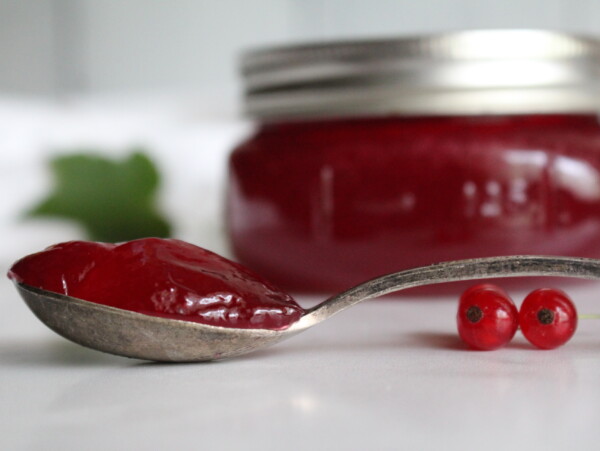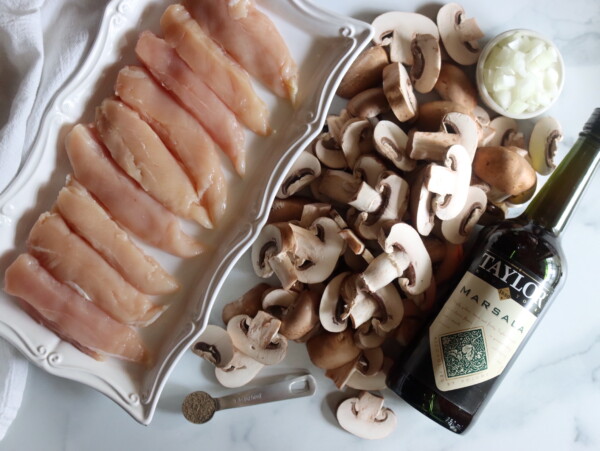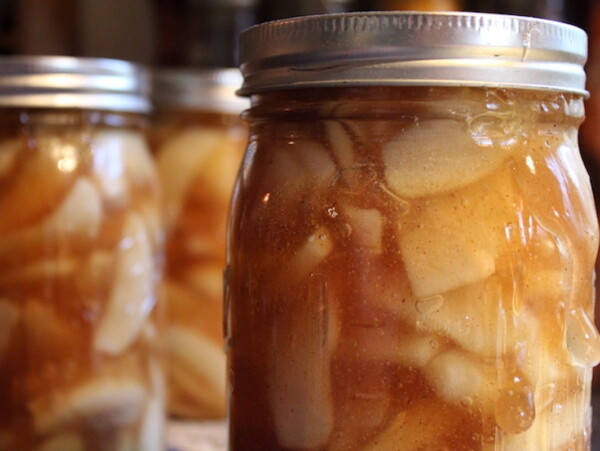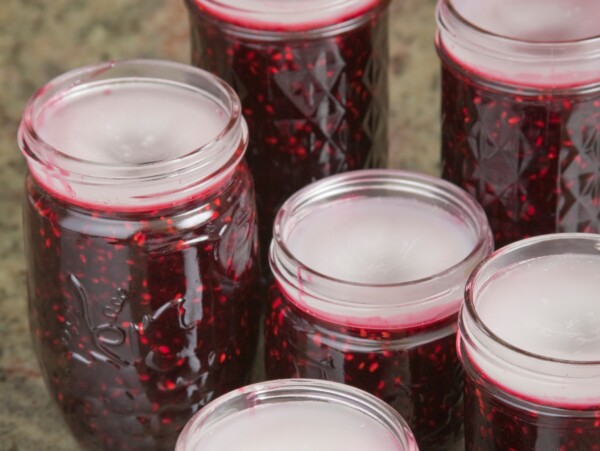This post may contain affiliate links. Please see our disclosure policy.
When canning fruit, there’s nothing more frustrating than watching your freshly peeled apples or pears turn brown before they even make it into the jar. This discoloration, known as enzymatic browning, happens when cut fruit is exposed to air, but it’s easy to prevent with the right technique.
Whether you’re canning peaches, pears, or apples, a simple antioxidant soak keeps every batch looking fresh and appetizing.
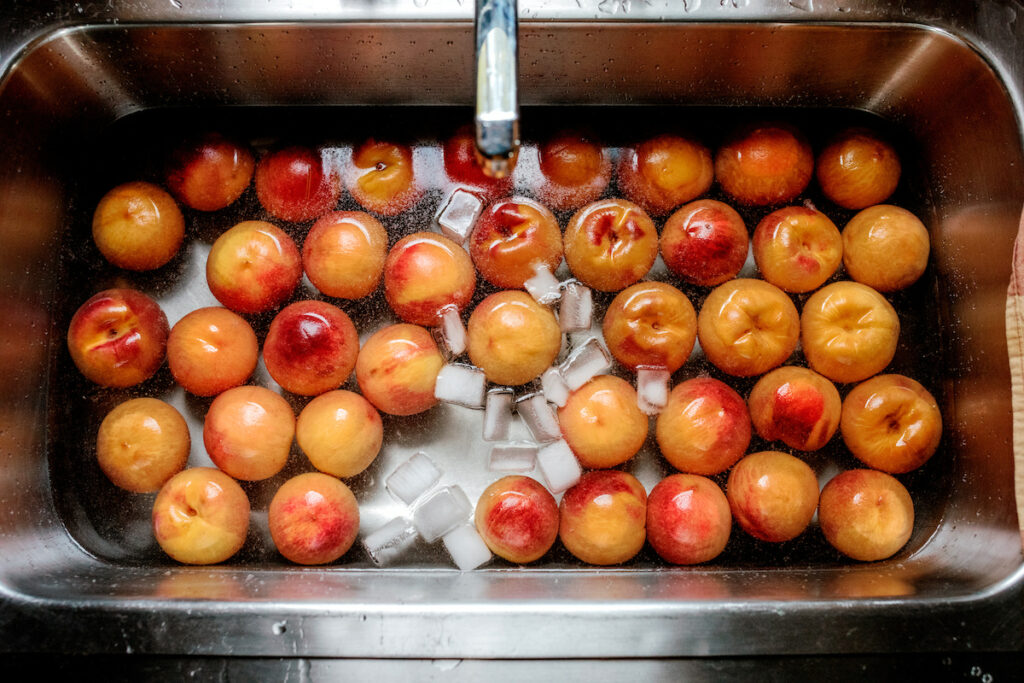
Home canners like to work in batches, it’s common to peel and chop large batches at once, but if you’ve ever looked down and noticed your apples, pears, or peaches turning brown before they even hit the jars, you’ve seen enzymatic browning in action.
This harmless but unsightly color change happens when cut fruit is exposed to air, causing enzymes in the flesh to react with oxygen. While it doesn’t affect safety, it can make your home-canned fruit look dull and unappealing.
Thankfully, there are several safe and effective ways to prevent browning while you prepare your fruit for canning.
Why Fruit Turns Brown
Once the skin is broken, fruits like apples, pears, peaches, nectarines, apricots, and quinces begin to oxidize, similar to how a sliced apple darkens after sitting out. The longer the cut surfaces are exposed to air, the darker they become.
This happens most often when working with large batches of fruit, since peeling and slicing takes time before the fruit is packed into jars and covered in syrup or juice.

When to Treat Fruit for Browning
It’s most important to treat when canning whole fruits, like canning peaches, canning apricots, or canning pears in syrup. Those are really noticeable when browned, and while it’s not a safety thing, we eat with out eyes as well as our mouthes…and pretty food just taste better.
It’s less important with foods like apple butter and pear butter, where you’ll be slow cooking the mixture to get it to caramelize anyway. In those canned goods, browning is what you’re going for in the end, you can skip the pre-treatment.

Some fruits brown almost instantly after cutting, while others only darken slightly. The following are the most prone to enzymatic browning and should always be pre-treated before canning:
- Apples
- Pears
- Peaches
- Nectarines
- Apricots
- Quinces
Fruits with naturally high acid levels, like cherries, cranberries, or citrus, don’t generally need pre-treatment for browning. Though, sour cherries are an exception, and will often brown as soon as they’re pitted. It’s a good idea to heat treat them as soon as they’re pitted if you’re making something like sour cherry jam.
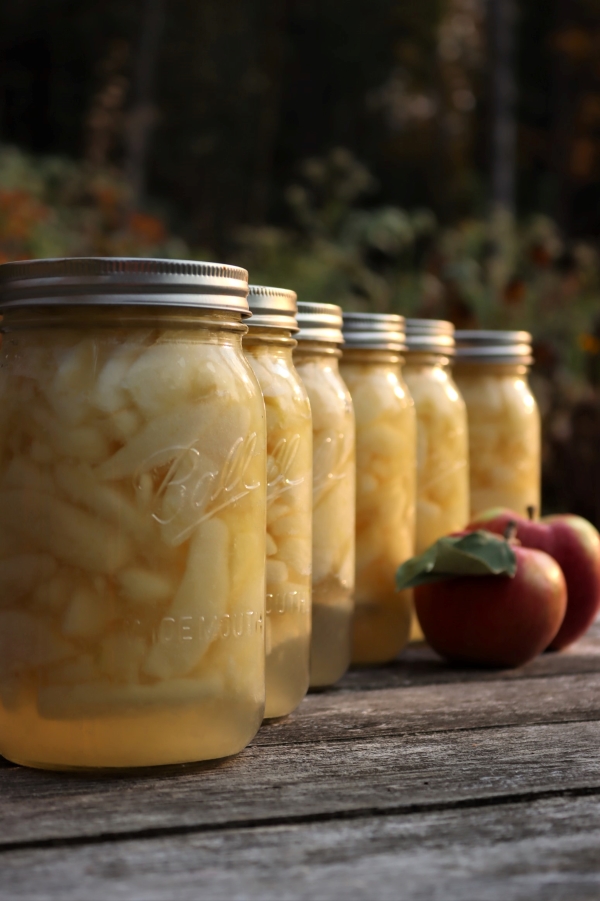
Ways to Prevent Browning In Fruits
Browning can easily be prevented with a few simple treatments that slow or stop the enzyme activity responsible for oxidation. In most cases, you’re creating an antioxidant soak using some type of acid, but each one has its own instructions.
Citric Acid or Lemon Juice: Most Popular Options
Most people, especially home canners, have lemon juice on hand at home. As a result, that’s the most common way to prevent browing in fruits. It’s not quite as effective as Ascorbic Acid, but it’s readily available.
Citric acid is also just as good, and many people have that at home for canning too.
- To make a lemon juice holding solution: Mix ½ cup bottled lemon juice with 2 quarts of cold water. Add the peeled or sliced fruit immediately after cutting, and let it soak while you continue prepping the rest of the batch.
- To use citric acid: Dissolve 1 teaspoon citric acid per quart of water and soak fruit for 5 to 10 minutes before canning.
Keep in mind that citric acid and lemon juice are less effective than ascorbic acid for preventing browning, but they’re still a useful backup option—especially for quick batches.
Ascorbic Acid (Vitamin C): The Gold Standard
Ascorbic acid is one of the most effective natural antioxidants for preventing browning in fruit. It works by halting the enzymatic reaction that causes discoloration and is completely safe for home use.
You can use pure ascorbic acid powder, crushed Vitamin C tablets, or a commercial product that contains it.
- To make an ascorbic acid solution: Dissolve 1 teaspoon of pure ascorbic acid crystals in 1 gallon of cold water. Place peeled or sliced fruit into the solution immediately after cutting and let it soak for about 10 minutes.
- If using Vitamin C tablets: Crush six 500 mg Vitamin C tablets and dissolve them in 1 gallon of water. The solution may appear cloudy because of fillers in the tablets, but it’s perfectly safe and effective.
This method works especially well for canning pears, apples, peaches, and apricots, which are all prone to browning. Once soaked, drain the fruit and pack it into jars as usual with syrup, water, or juice.
Another acid, known as Erythorbic acid, also called iso-ascorbic acid, is chemically similar to ascorbic acid but lacks Vitamin C activity. However, it functions the same way to prevent oxidation and preserve color. You can use it in the same proportions and method as ascorbic acid.
Commercial Anti-Browning Products
If you regularly can large batches of fruit, you may find it easiest to use a commercial product such as Ball® Fruit-Fresh®, Mrs. Wages® Fresh Fruit Preserver, or another brand of “fresh fruit color protector.”
These products usually contain a blend of ascorbic and citric acids and sometimes small amounts of sugar or starch to help the powder dissolve evenly. Follow the directions on the package—most require mixing a few teaspoons of powder into a quart or gallon of water before soaking the fruit.
Commercial mixes are shelf-stable, convenient, and specially formulated for preserving color in home-canned or frozen fruit.
Heat Treatments
Applying heat can also destroy the enzymes responsible for browning. While this isn’t practical for every fruit, it’s useful in some cases:
- Blanching fruits like apples, peaches, or apricots for a minute or two in boiling water before peeling helps loosen skins and inactivate enzymes.
- Cooking fruits (as when making applesauce or pie filling) also prevents browning because the heat deactivates the enzymes permanently.
- Canning itself applies enough heat during processing to prevent future darkening—so the main goal is just keeping the fruit bright during prep time.
What Not To Use
In the past, sulfites were widely used to prevent browning in commercial food production. However, they’ve been linked to severe reactions in some people with asthma and are no longer recommended for home use.
The FDA has banned sulfite treatment on fresh produce sold to consumers, and most university food safety programs discourage their use in home preservation.
Instead, stick with safer alternatives like ascorbic acid or citric acid. They’re just as effective without the health risks.
Practical Tips for Large Batches
When working with large quantities of fruit, a few practical steps go a long way:
- Work in small batches to limit exposure time. That doesn’t mean canning in smaller batches, but simply prepping fruit in small batches and getting them treated with an anti-browning agent while you work with the rest of the fruti.
- Submerge peeled fruit immediately in your chosen anti-browning solution.
- Use cold water for soaking—warm water speeds oxidation.
- Keep cut fruit covered until you’re ready to fill jars.
- Avoid metal containers when soaking fruit, as acids can react with them and cause discoloration. Use glass, plastic, or enamel bowls instead.
Preventing browning in fruit isn’t just about looks and winning prizes at the fair, it’s about keeping your home-canned goods fresh, colorful, and appetizing. Whether you use ascorbic acid, citric acid, or a commercial anti-browning mix, soaking fruit as you work will help ensure every jar stays bright and beautiful.
If you’re canning pears, apples, peaches, or any other fruit that oxidizes quickly, set up a bowl of antioxidant solution before you start peeling. It’s one small step that makes a big difference in the quality of your finished jars.
